
Workshop participants gathered at the school in the community of Xeatan Alto, high in the hills above Lake Atitlan.
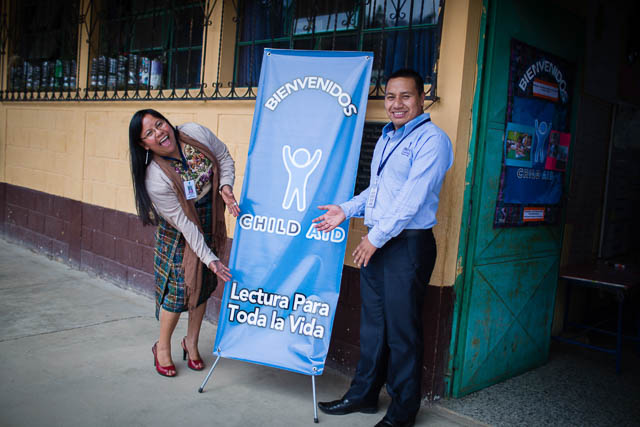
Literacy Trainers Graciela Pichiya and Jorge Sanum greet participants to their first Child Aid workshop with a smile and hearty “Bienvenidos!”
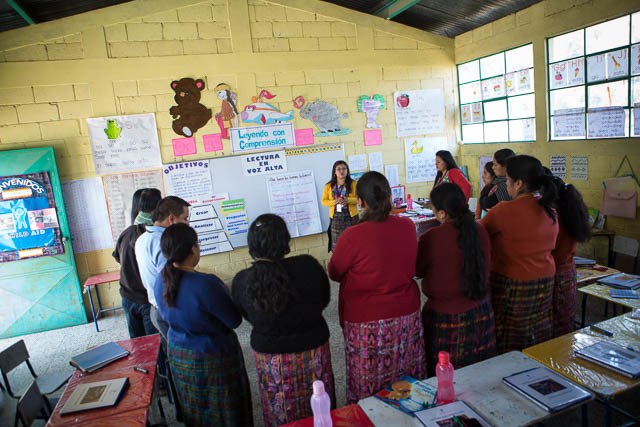
All Child Aid workshops are held in classrooms at host schools in nearby communities. This avoids extra travel time for teachers and ensures that the environment is familiar and comfortable. Workshops are kept small — usually under 30 participants — so that everyone has an opportunity to participate.

Literacy Trainer Heidy Coyote Mactzul leads the group in a discussion of the characteristics of good readers and how teachers can help their students develop good reading habits.
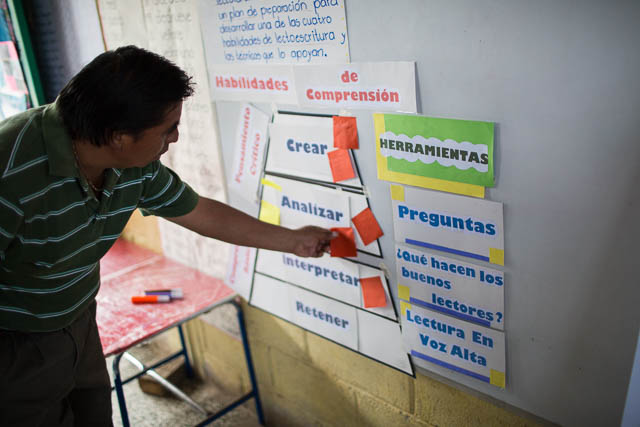
Teacher Carlos Xinico Tum places a note on a map of the four basic literacy skills: Retention, Interpretation, Analysis and Creation. The focus of Child Aid’s training program is to help teachers learn how to develop these skills in their students.
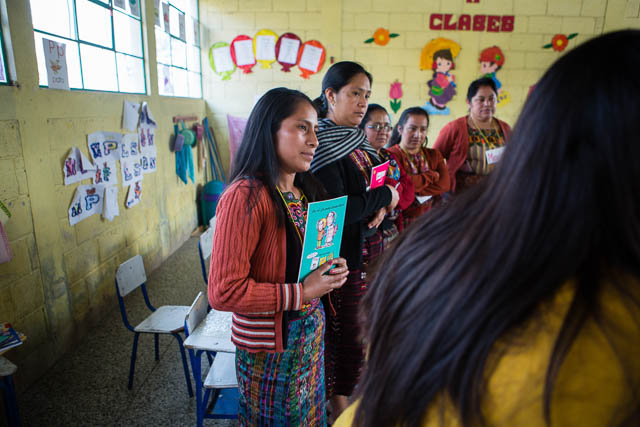
A teacher listens intently during a group activity. First time attendees often tell us they are surprised at how useful and informative Child Aid workshops are compared with their previous training experiences. “At the Child Aid workshop today, we both learned and practiced all these strategies,” said one attendee, “so now I know that I can use these in my classroom when I am teaching. This is very useful.”
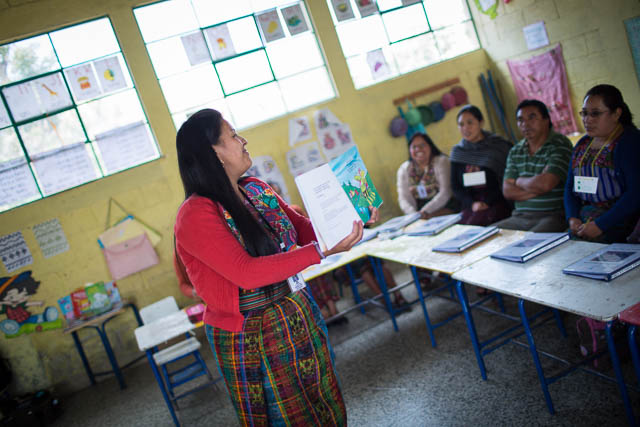
Heidy demonstrates how to do a read aloud. She reads with expression and enthusiasm, using frequent questions to engage listeners in the story. Later, teachers will practice doing their own read alouds with the group. Child Aid workshops combine modeling and practicing to help teachers better understand how a new techniques work and how they can use them in their own classroom.

Teachers and Child Aid staff take a break to eat a bowl “Käj,” a thick traditional soup made in the Patzun region from ground white corn and usually a large piece of chicken. The word “käj” is Kaqchikel, the indigenous language spoken in much of Guatemala’s Western Highlands where Patzun is located. In the background are stacks of the corn tamales that will be served with the soup, freshly made by the school’s kitchen. ¡Qué rico!
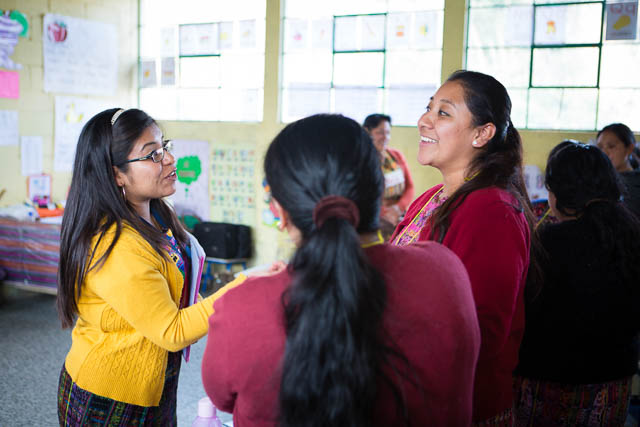
Literacy Trainer Marilena Ixen chats with teachers during a break. Developing friendly and trusting relationships with teachers is an important goal for trainers. It allows them to work closely with teachers, providing coaching and support to help them integrate new activities and techniques into their classroom instruction.

Teachers work on lesson plans for their next read aloud session with students. Teachers choose a book and plan specific techniques to use during a reading that will help develop students’ comprehension skills. These lesson plans will be used during their follow-up coaching sessions, when trainers help teachers make the transition from learning techniques in the workshop to using them in their classrooms.
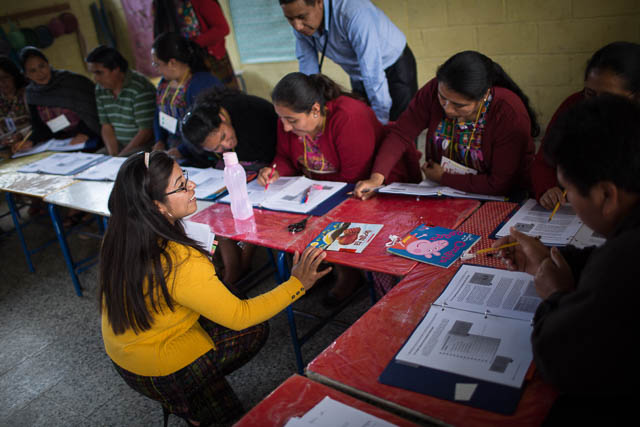
Marilena checks in with teachers as the work on their read aloud lesson plans.
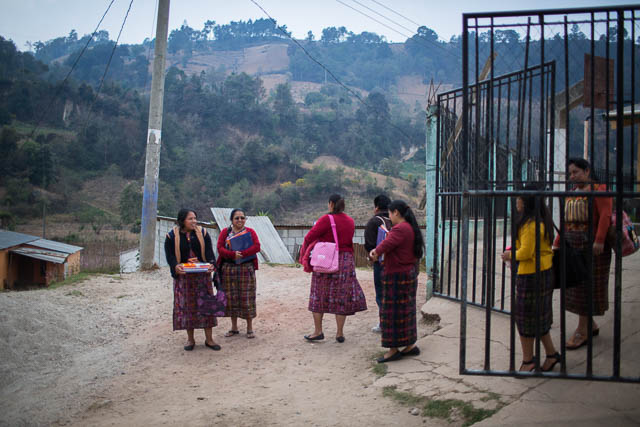












When teachers walk into their first Child Aid workshop, they often don’t know what to expect and their expectations are usually low. That’s because training for Guatemalan teachers is generally of very poor quality. Trainings are conducted in a lecture format with up to 150 to 200 teachers in a session. Presenters talk from a podium while the teachers listen and take notes with little opportunity for dialogue.
Teachers quickly discover, however, that Child Aid workshops are different — small, interactive, and full of practical techniques for the classroom. Follow along as a new group of Reading For Life teachers attends their first workshop and see what makes a Child Aid teacher training unique.